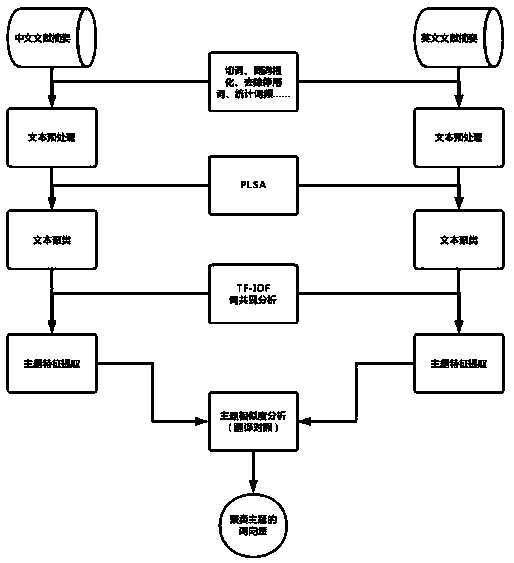A subject-class-based cross-lingual biomedical research paper information recommendation method
A biomedical and information recommendation technology, which is applied in the field of subject-based cross-language biomedical academic paper information recommendation, can solve the problems of affecting the recommendation results, low model effect, deviation from the real needs of users, etc., to solve polysemy and polysemy, reducing the effect of dependence
- Summary
- Abstract
- Description
- Claims
- Application Information
AI Technical Summary
Problems solved by technology
Method used
Image
Examples
Embodiment
[0042] The present invention is a cross-language biomedical academic paper information recommendation method based on topic clustering. The method is mainly divided into two parts: offline text information processing and online document recommendation.
[0043] The first part of the offline text information processing work is mainly to extract the information of academic literature to obtain vector information that can be used to reflect the theme of the literature. This part of the work is mainly divided into the following four steps, such as figure 1 shown.
[0044] S1: First, perform data preprocessing on the text data.
[0045] S2: According to the word frequency information obtained by data preprocessing, apply the PLAS model to perform text clustering and obtain the subject grouping of each academic document.
[0046] S3: Calculate the word vector information of each topic group and obtain the vector information of each topic group.
[0047]S4: Use the translation rel...
PUM
 Login to View More
Login to View More Abstract
Description
Claims
Application Information
 Login to View More
Login to View More - R&D
- Intellectual Property
- Life Sciences
- Materials
- Tech Scout
- Unparalleled Data Quality
- Higher Quality Content
- 60% Fewer Hallucinations
Browse by: Latest US Patents, China's latest patents, Technical Efficacy Thesaurus, Application Domain, Technology Topic, Popular Technical Reports.
© 2025 PatSnap. All rights reserved.Legal|Privacy policy|Modern Slavery Act Transparency Statement|Sitemap|About US| Contact US: help@patsnap.com



